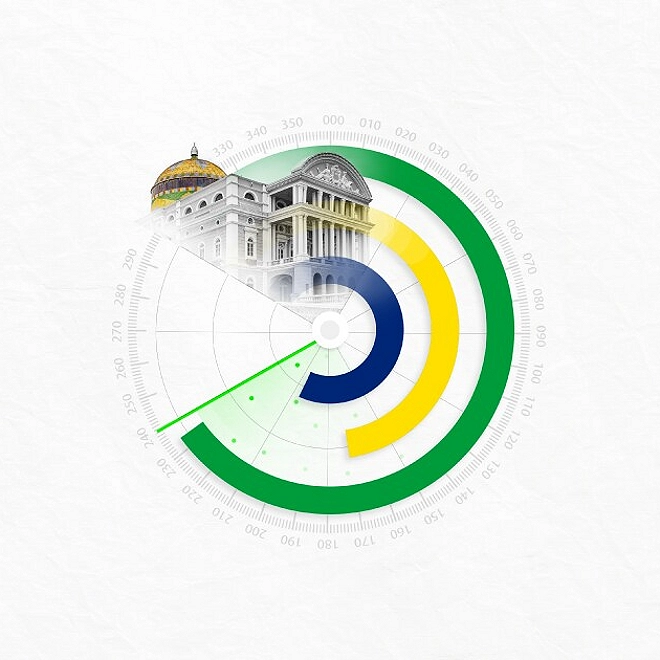Brazil
Recovery in sight
A surge in new COVID-19 cases weighed on Brazil’s economic recovery in the first half of the year. Yet, hopes for a rebound in economic activity have been rekindled due to rising vaccinations1 and an uptick in the value and volume of the country’s commodity exports.2 As the pandemic eases from the peaks of the second quarter, both consumers and business sentiments have gone up. While worries over the labor market recovery and the pandemic’s impact on income inequality will remain in the near term, a range of planned reforms, if implemented quickly, may push the economy toward higher potential growth.
A return of the virus puts the brakes on recovery in Q2
The economy contracted by 0.1% in the second quarter of 2021, a reversal from the previous three quarters of growth.3 The Q2 contraction was likely due to the second wave of COVID-194 and a 2.8% contraction in agriculture brought on by one of the worst droughts Brazil experienced in nearly a century.5 Industry too faltered, declining by 0.2% during the quarter. Services, however, grew slightly (figure 1), preventing a stronger slide in real GDP.
On the demand side, aid to the economy came from the external sector, with exports growth nearly doubling from the first quarter to 9.4% in Q2. Private consumption, however, was flat during the quarter, with business investment declining for the first time in four quarters. No wonder then that real GDP is still marginally lower than what it was before the pandemic.

Commodities and vaccines to the rescue
A nascent global recovery has aided a revival in commodities. This augurs well for Brazilian commodity exports (figure 2), especially given growth expectations in its two key markets—the United States6 and China7. The value and volume of Brazil’s agriculture and mining exports—soybean, iron ore, and oil—account for 40% of the country’s merchandise exports and have therefore gained momentum. For example, the US dollar value of soybean exports to China rose 41% in April, while export volume rose at a lesser pace of 35%. Similarly, in March, the value of iron ore exports to China increased 18%, while export volume rose 11%. The uptick in the commodities cycle has likely aided Brazil’s overall GDP growth in the second quarter.


Brazil’s economy is also likely to have benefitted from a rise in the pace of COVID-19 vaccinations. As of August 29, about 29% of the population has been fully vaccinated compared to just 12% in June.8 And another 34.2% have now received the first dose of the two-dose vaccine regimen, much higher than what it was in June (figure 3). Rising vaccinations have thwarted the spread of the virus, with the number of new cases declining steadily since June-end—the daily average of new virus cases was 139 per million in August, compared to 315 per million in June.
Business and consumer confidence have edged up
Given this scenario, business and consumer sentiments have received a boost. According to a survey from Fundaçâo Getulio Vargas (FGV), the business confidence index reached an eight-year high in August.9 While manufacturing confidence has remained well above the 100-point threshold since August 2020, confidence in the services sector rose to 99.3 points—the highest since October 2012.10 The IHS Markit Services Purchasing Managers’ Index (PMI) also rose 1.2 points in August and is now in the expansionary territory for the third month at 55.0 (50 points is the threshold for expansion).11 This augurs well for the services sector as revenues of its key subsectors such as tourism and hospitality, among others, remain under pressure due to pandemic-related concerns. Consumer confidence has also edged up, although it is well below pre-pandemic levels.12 However, risks from a slow labor market recovery and elevated price pressures remain.

A shot of planned reforms may aid medium-term growth
As Brazil navigates through the second half of 2021, a healthy economic boost can come from a host of planned reforms such as disinvestment of state holdings in companies,13 improvements in the country’s taxation regime,14 and other administrative reforms.15 More recently, the “Business Environment Law” passed in June aims to modernize the country’s business environment and promote a startup ecosystem to attract investments.16 What is also likely to boost investor confidence are the recent legislations to formally establish the autonomy of the central bank17and update the “Bankruptcy Law” to increase the recovery rate of companies filing for bankruptcy and reduce the average duration of bankruptcy processes.18
While the legislative process usually takes time, any progress in reforming the economy can work as a positive catalyst to growth. For example, in early September, Brazil’s lower house passed a preliminary text of the tax reform bill, which includes dividend taxation and reduction in corporate income tax rates among others. Currently, policymakers are discussing additional amendments before the final text of the bill moves to Senate.19 While these measures may not heal the emotional scars of the pandemic, they will go a long way in ensuring that Brazil moves to a faster trajectory of potential GDP growth.
Deloitte Global Economist Network
The Deloitte Global Economist Network is a diverse group of economists that produce relevant, interesting and thought-provoking content for external and internal audiences. The Network’s industry and economics expertise allows us to bring sophisticated analysis to complex industry-based questions. Publications range from in-depth reports and thought leadership examining critical issues to executive briefs aimed at keeping Deloitte’s top management and partners abreast of topical issues.
Learn More


